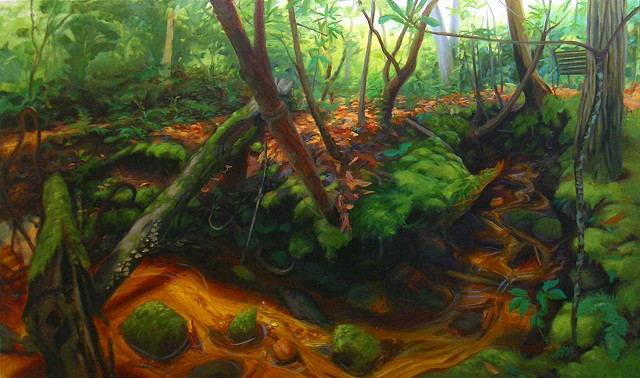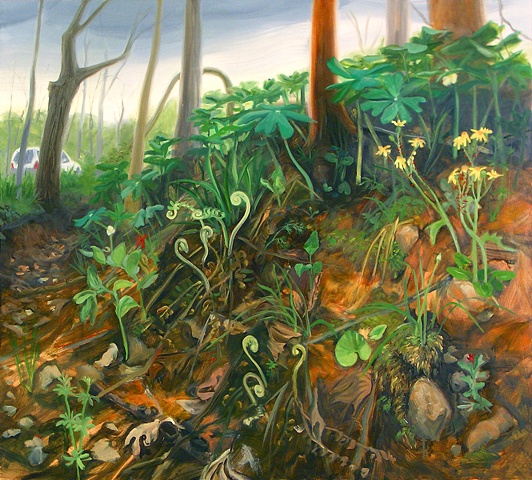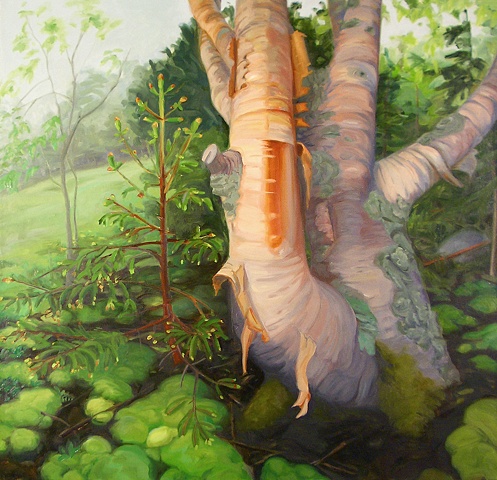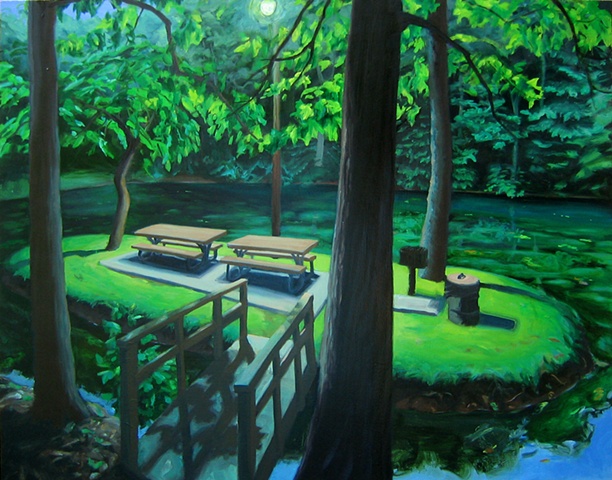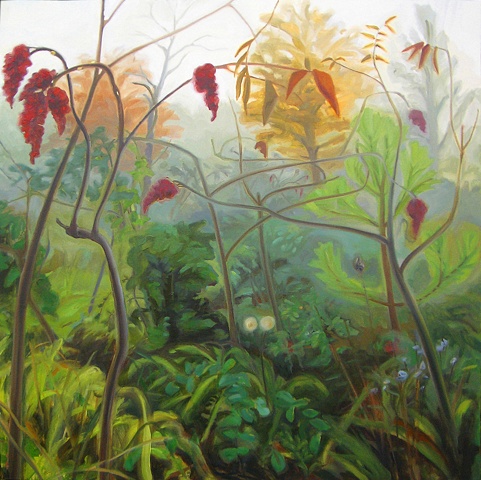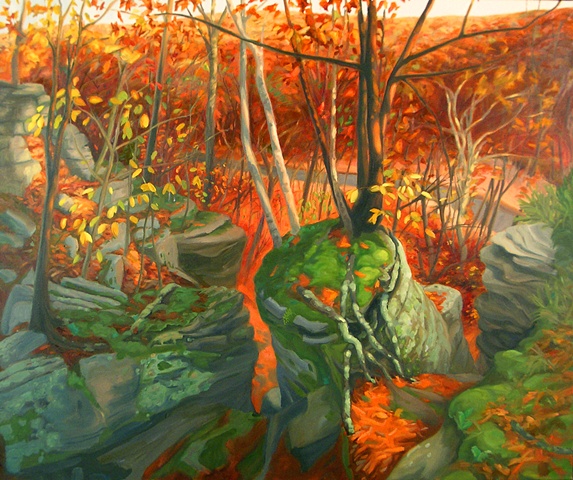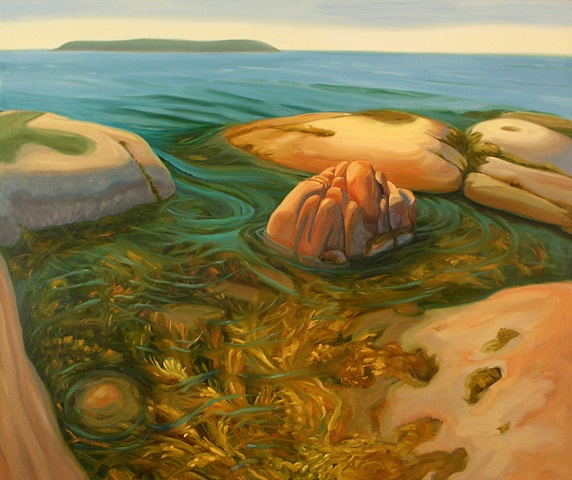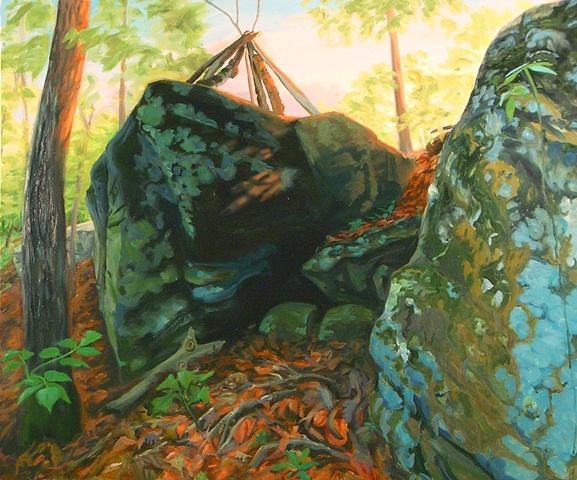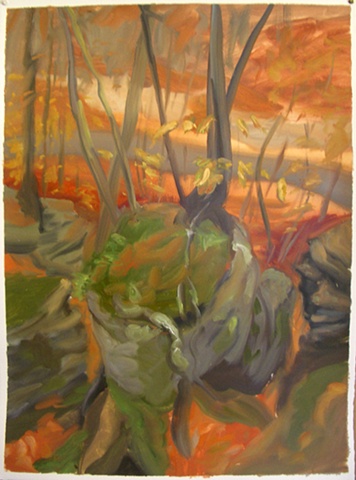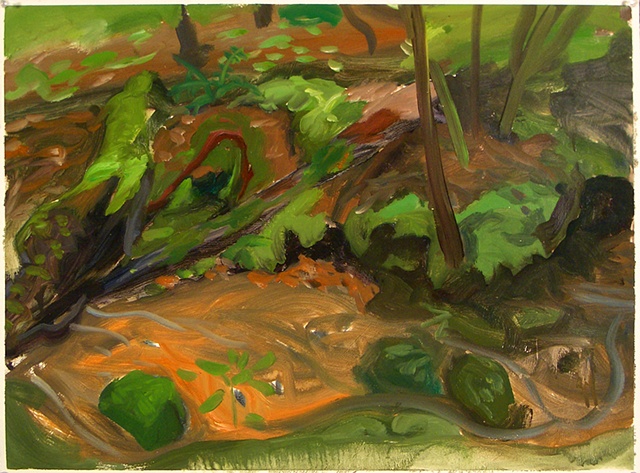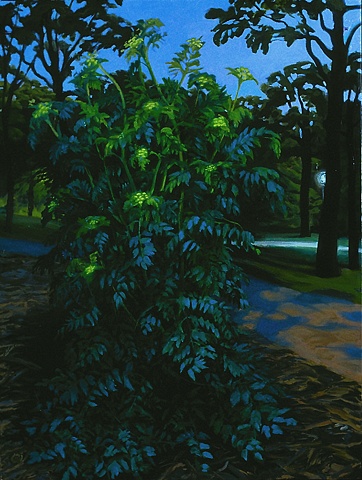small changes
This series focused on small, commonplace interactions of humans with nature.
I think a lot about why we are drawn to nature, and in particular, why we seek out places where there aren’t any other humans (the myth of “virgin” terrain, which of course becomes deflowered as soon as we arrive).
Some of these paintings are about losing myself in the experience of being outdoors – the way a place can represent certain states of mind, create sensations of physical empathy, or mesmerize with complex beauty.
In other paintings, the vestiges of human presence refer to everyday interactions with nature: a car, a road, a cut branch, the results of herbicide. In this I tend to feel more of a kinship with contemporary landscape photographers rather than with painters. I find in these photographers a common interest in looking for something that is strange but real. An additional influence on a few of the paintings was the work of 16th century Flemish painter Roelandt Savery. Poised between the symbolic landscapes of the Northern Renaissance and the realism of 17th century Dutch landscape painting, he renders the natural world in a manner that is highly specific and detailed, yet saturated with animistic energy. In Hambidge Creek and Creekbed in April, my intention was to create a similar sense of a profusion of small entities.
